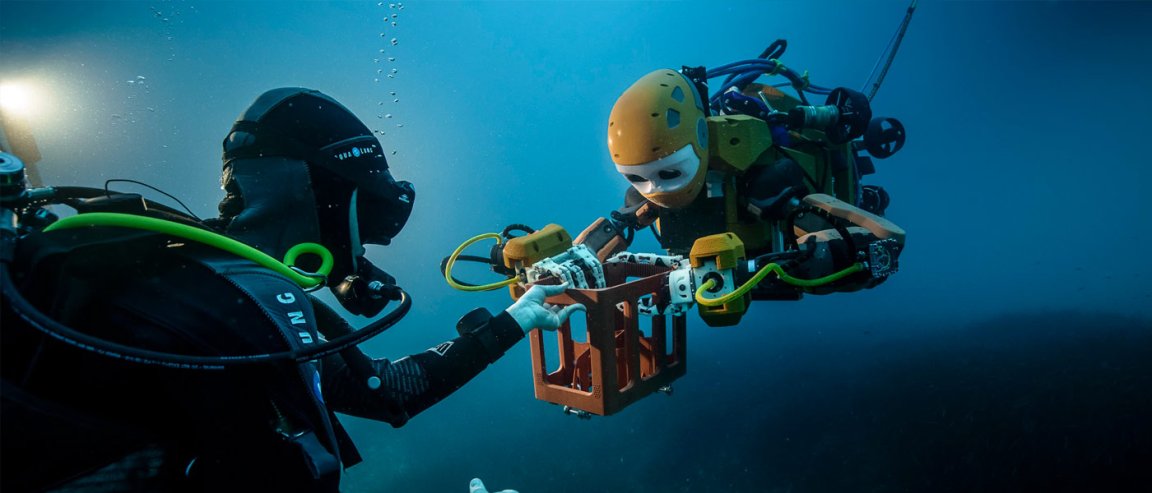
A Robotic Mermaid?
More and more humanoid robots are being developed to do human tasks every year. Just this month, as reported in a press release, Stanford’s very own diving robot, OceanOne, goes for its first mission to help archaeologists in an exploration under the Mediterranean Sea.
This “merbot” is five feet tall and humanoid in shape, having a head and arms. It was originally meant to go under the Red Sea to study delicate coral reefs. Unfortunately, humans can’t reach the depths that OceanOne was designed to reach—so the robot is a fantastic surrogate, furnished with anthropomorphic limbs, hands, and sensors, and is perfect for exploring the deep-sea with unprecedented versatility.
OceanOne made its maiden voyage alongside human divers to explore King Louis XIV’s flagship La Lune, an untouched relic of the Age of Sail which sank at the bottom of the Mediterranean over 350 years ago.

What It Can Do
The OceanOne merbot was built for precise movements and handling fragile materials in environments where human beings simply cannot easily go, like the shipwreck from its first dive. As such, the robot is actually controlled remotely, with features that give feedback to the pilot—and that’s why Stanford calls it a “virtual diver.”
Its head is built with two eyes for stereoscopic vision, and its nimble arms and hands give the robot maneuverability while also providing realistic feedback to the user.
With force sensors in each wrist, the pilot can get a feel for the weight of any object OceanOne is holding through a feature called haptic feedback. Robotic intelligence is furnished by the merbot’s “brain,” and it uses tactile pressure sensors that prevent it from crushing anything in its grasp.
The merbot’s batteries are contained in its tail, along with computers and a set of underwater thrusters. Pairing that with its navigation system, it can keep itself steady even in turbulent waters.
OceanOne’s nimbleness and its impressive features surpass the recently deceased deep-ocean diving robot Nereus. Experts also say that it will provide help in more dangerous sea environments, such the Fukushima Daichi nuclear reactor site.
Next month, OceanOne will return to the Stanford campus, reports say, where the improvement of its platform will continue.